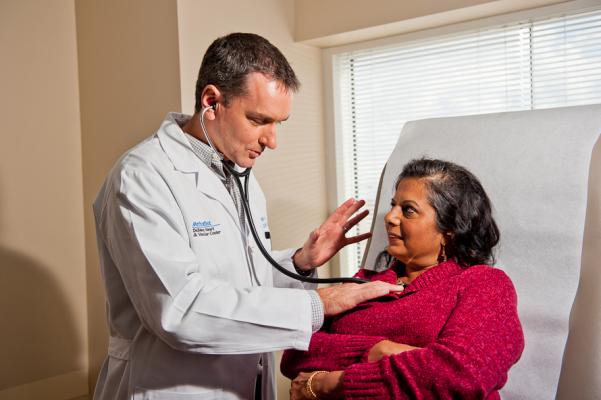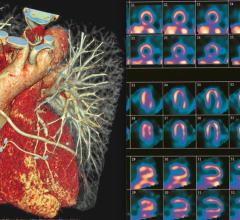
November 13, 2015 — Chest pain in female-pattern heart disease is linked with abnormal heart blood flow, a new Cedars-Sinai Heart Institute study shows. The effect was demonstrated with a drug commonly used to alleviate chest pain patients with coronary artery disease, which was found to be ineffective in patients with moderate female-pattern heart disease, but may offer some relief for sicker patients.
The study’s results were presented as a late-breaking trial at the American Heart Association Scientific Sessions in Orlando. The study is published online by the European Heart Journal and will appear in an upcoming print edition of the journal.
The drug, ranolazine, generally is prescribed for patients with angina, an often painful sensation of chest pressure common in coronary artery disease. Coronary artery disease develops when the major blood vessels that supply the heart with blood become damaged, often because cholesterol plaque clogs the heart’s major arteries and decreases blood and oxygen flowing to the heart.
Coronary artery disease typically affects male patients. In women, cholesterol plaque tends to spread more evenly into thousands of tiny blood vessels that surround the heart muscle. Women with this condition, called coronary microvascular dysfunction, often undergo tests for coronary artery disease, which fail to reveal coronary microvascular dysfunction. As a result, many women go undiagnosed although they are at high risk for a heart attack.
“Most standard treatments for heart disease were developed after being tested exclusively on men,” said Noel Bairey Merz, M.D., director of the Barbra Streisand Women’s Heart Center in the Cedars-Sinai Heart Institute. “For too long, physicians treated women’s heart disease the same way they treated heart disease in men. We wanted to test if the symptoms experienced in these patients are related to coronary microvascular dysfunction by using a medication known to be effective in chronic angina, to see if this treatment could be helpful to women with microvascular or female-pattern heart disease.”
Bairey Merz led the double-blinded, placebo-controlled study as part of the National Heart, Lung, and Blood Institutes’ Women’s Ischemia Syndrome Evaluation (WISE) study, a multi-year, multi-center research initiative aimed at improving diagnosis and developing treatments for microvascular heart disease.
In the study conducted at the Cedars-Sinai Heart Institute and at the University of Florida, 128 coronary microvascular dysfunction patients – 96 percent of them women – were given 500 to 1,000 milligrams of ranolazine twice daily for two weeks and a placebo pill daily for two weeks. Neither patients nor their physicians knew which pill group patients were assigned at which time.
During both investigational segments, the patients were assessed and tested using the Seattle Angina Questionnaire and a test to measure the blood flow through the heart.
Results include:
- Whether taking the medication or taking the placebo, patients experienced no statistical difference in angina or blood flow;
- Change in angina directly correlated with change in heart blood flow. Patients who experienced an improvement in increased blood flow also reported an improvement in angina; and
- The subgroup of patients with severe coronary microvascular dysfunction had significantly less angina along with improved blood flow through the heart and more satisfying quality of life.
“Although ranolazine was not effective in the general population of coronary microvascular dysfunction patients, we did find that patients with more severe dysfunction did experience some benefit,” Bairey Merz said. “We also were pleased to be able to show that symptoms are related to the blood flow through the heart.”
The study was supported by the National Heart, Lung, and Blood Institute under award number 5R01HL090957 and by Gilead Sciences, Inc., a biopharmaceutical company that produces ranolazine and markets it under the brand name Ranexa.
For more information: www.cedars-sinai.edu


 January 23, 2024
January 23, 2024 








